Growing new mountain bikers.
I gave a skills clinic yesterday. It's part of my vision to bring back mountain biking energy to this area. Step one is growing some new mountain bikers.
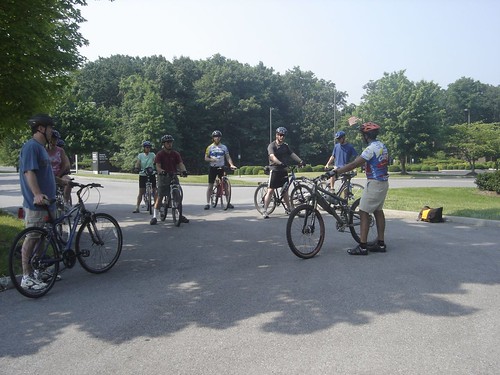
The clinic was designed to focus on the fundamental basics of mountain biking.
Blance
Vision
Positioning
Braking
The inspiration in the teaching philosophy came from my work with Gene Hamilton at Better Ride. I've even asked him about getting some sort of coaching certification from him.
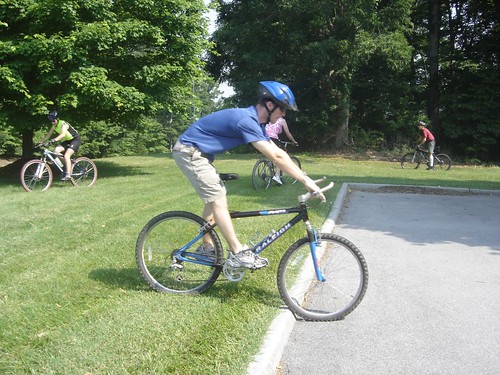
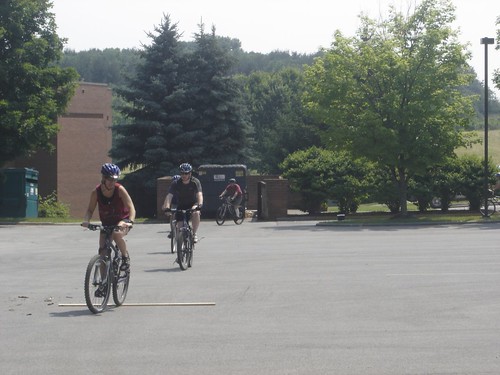
I spent a lot of time struggling with how much information to throw at them. Typically I opted for information overload. I also spent a lot of effort figuring out how to teach some of the skills. How to break it down in a methodical step-by-step process to that you can show someone how to do it.
It's so easy being experienced at something and say just do it like this. It's one thing to be fast, but it's another thing totally to know why you are fast and to show someone else how to do what you do.
It was really fun. 3hrs. It went by in a flash. I was so in my element. Talking ad-nausea about the infinite details of mountain biking. Who doesn't like to be seen as the expert, the guru, at something. Pulling answers out of the sky to questions about handling, etc.. Well I hope my answers were good.
There was no where near enough time to get to everything. But I wanted to just get them exposed to some certain principles that will help them get through the steep learning curve of mountain biking.
I tried my best to get the point across that it is going to take a while for things to sink in, and squash the notion that they are going to improve leaps and bounds by tomorrow.
But at least they have some basic knowledge to move forward on the right foot. Everyone was happy with the clinic.
Step 2 is to do a beginner racing clinic, to get people the confidence to enter and finish a the 1st timer catagory at Rowdy Dawg. Or to do some instructional trail rides, where we go out and stop at select corners, or tech sections and work out line and practice 2-3 times.
But all this takes time. I've got the energy and the will, but working full time, and my family, and my own training/racing takes up most of my time.
Here's the outline FYI for you to try growing your own new mountain bikers:
-------------------------------
Intro
• Goals of the class: give some basic instruction, with over goal of having more fun
• A lot of people think that fitness can be trained but skills are natural
• Not being scared might be natural but skills can be learned.
• Clinic based on core fundamentals (like free throws to basketball)
• Parking lot is controlled environment, no rocks, trees, etc..
• Lots of info at once, info overload
o printed outline provided
o take your own notes as soon as possible after class
• Won't realize benefits in one day
o Need time to make concepts second nature
o May be difficult at first because concentrating so much
Trail Etiquette
• No bikes allowed on the trail around the pond.
• Bikes yield to Horses and hikers
• Hikers yield to horses
• Bikes are really quiet when approaching hiker/horses
o Make noise, shift, ring a bell, call out well before you reach them
o Ask politely to get by, and if a horse ask which side to get by on
o Horses can be skittish and afraid of bikes
o Freewheel can sound like a snake
o Pick up bike or at least rear wheel
• When approaching hiker/horses, pull over
o Usually they will let you by
o Be prepared that a hiker/horse will be around a corner
• Unwritten rule that uphill biker has ROW over downhill biker
o Many don't follow this, so don't fight it, but practice it
• Pack out what you pack in
• Don't make puddles bigger by going around, usually better to go through
• Help out at trail maintenance, no maintenance=no trails.
Bike setup
• Don't need expensive bike or all the latest 5" of travel front/rear
• DO need a properly working bikes
o shifting, braking, fit
• Go to shop for more in depth fitting. Worth it if you get into cycling more.
• Saddle Height
o XC height is a compromise between pedaling efficiency and handling
o Ok to drop saddle down to technical sections, make a mark with pen
o return to position for climbs
• Tires / Pressure
o low pressure provides better traction for cornering and climbing
o low pressure more susceptible to pinch flats
o smaller tires require more pressure to keep from pinch flatting
o trial and error to find the lowest pressure that you can ride w/o pinch flatting.
o LEARN how to change a flat. Carry spare tube, pump, tools
o bigger tires provide more contact patch for cornering traction
some built in suspension
more rolling resistance
o Buy a floor pump with a gauge, pump tires up every ride.
• Brake Lever position
o wrists inline with forearms is the strongest position
o levers rotated too far up or down place the wrist in a weak position
o rotate levers to create straight line from wrist to forearm
o There is a range and no one right position
• Brake lever reach
o set reach of lever to lie underneath first knuckle
• Brake contact point
o Look for bolt on brake lever for reach adjustment
o Finger strength is strongest the closer the fingers are to being in a fist
o If brakes engage too far out it can cause forearm fatigue
o Make sure brakes fully engage before lever hits the bar
• Basic gearing
o 3 rings up front, Bigger is harder, smaller easier
o 7 to 9 speeds in the rear. Bigger is easier, smaller is harder
o stay out of BIG BIG and SMALL SMALL
o shift before you get onto a hill.
o Shifting under heavy pressure causes problems.
o chose a gear that allows you to spin but isn’t too easy
o slightly higher gear than the road, pushing against the gear helps stabilize you off road
o Shift constantly in reaction to the terrain
• Basic Suspension Setup
o Set compression setting (air/spring) to produce 25% sag.
o This is just a starting point
o don't be afraid to change things, just write it down
o Rebound, fast or slow, personal preference
Fundamental Principles
• Staying loose and dynamic
o suspension travel of arms/legs: keep them bent
o light grip, tension causes problems
o loose, flowing, dynamic
o if crashing, think roll instead of putting arm out
o Warm up prior to hitting the trail.
o * Ride around exploring limits of motion on bike
• Center of Gravity (COG)
o Where it is
o Change it in reaction to conditions
shift weight back when going down ledges
shift weight forward when climbing.
o Manipulate it to move the bike around
• Momentum
o Objects in motion want to stay in motion
o Usually going faster is safer (within reason)
o More crashes caused by going too slow than too fast
o Spinning wheel is more stable
o * Show example of holding a spinning front wheel and the gyroscope effect.
• Basic Neutral position
o COG balanced over pedals
shift fore or aft depending on slope of hill
feel the weight go into the pedals
can hold onto bar with light grip, even, just thumb/index finger
only weight on hands is weight of forearm.
Will feel awkward at first.
o chest low
o elbows out
o Pedals level, with strong foot forward
o Head up
Balance is based on fluid in inner ear
level head tells proprioreceptors you are balanced
tilted head throws off balance
will talk about vision more later
o Exaggerate the position, get REALLY low, Put you elbows WAY out
o On the trail it's never as good as you think so exaggerate in practice
• Step one: Find balance point over pedals. Ride around feeling for the sweet spot
• Step two: Bend elbows, chest low, head up, light grip: repeat riding around.
• Step three: add sticks, maintain light grip
• Basic position under Breaking
o What happens to your COG under heavy braking. Just like in a car.
o Need to shift COG back during braking.
o Ride towards cone in neutral position, brake hard at cone, stop breaking at 2nd cone
• Shifting COG back on dropoffs
o Brake before front wheel drops off
o Shift COG back as it front wheel drops off edge
o Drop off curb
o Drop off ramp, brake before ramp, shift weight back
• Basic climbing position
o Weight balance to maintain traction, and keep front wheel from popping
o Bend at waist
o Elbows OUT.
opens up rib cage for better breathing, elbows in constricts breathing
o Head up
Looking down promotes steering errors
o Pull back on bars to drive rear tire into ground
o For steep hills scoot forward and float over tip of saddle
o Climb up hill to practice position
• Getting front wheel up (coaster wheelie)
o Pulling up with arms only gets you so far
o COG needs to be shifted to the rear
o Know you are doing it right when the front wheel sets down instead of slamming down
o Practice coaster wheelie over sticks/discs
• Basic front wheelie pop
o Choose big enough gear
o strong ¼ to ½ pedal stroke
o slight shift back of COG
o Practice over sticks/discs, curb
• Vision
o Head up, slows things down
o Analogy of driving down highway looking out side vs looking forward
o Look where you want to go, avoid target fixation
o Peripheral vision very powerful. Drag racers look at lights w/ peripheral vision
o Show peripheral vision drill with pen
o Look at object, register it in mind, then look past object
o Repeat coaster wheelie with stick.
• Braking
o Beginners usually afraid of front brake
o Most braking power comes from the front brake
o Highest braking power happens right before tires start to skid
o Skidding is NOT powerful braking. Ok for direction changes, not for stopping
o Need to shift weight back under heavy braking
o Look for braking points, smooth areas, not in dropoffs. Brake hard here before rough spots or drop offs.
o Brake hard before corners, then off the brakes
very difficult to do, takes lot of time to get comfortable
*Drill, start from standstill
at cone use rear brake only, measure stopping distance
at cone use front brake only, measure stopping distance
at cone use both brakes only, measure stopping distance
• Cornering ( simplified version)
o brake before the corner, try not to brake while in the corner
o outside leg down
o weight the outside
o lean bike to the inside, lean your body to the outside
o look through the corner with your vision
o Practice going around corner, then do figure 8
• Going slow to go fast
o Slow race, working on balance
o Trackstands
o Show balance drill (one foot in front of other)
o Do a slow race
o Show how to do a trackstand
o Repeat slow race
• How to practice
o Practice basic position anywhere.
o When out riding focus ONE thing at a time. Maybe for the whole ride, or just one sections
braking hard before corners
keeping weight over pedals
keeping your head up

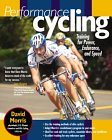
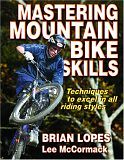
2 Comments:
very cool. way to grow the sport.
and a good outline of The Basics as well.
-capt pearl
Looks like you put together a good class Ashwin.
Reading through your outline reminded me of a few "basics" that I tend to get lazy about.
Post a Comment
<< Home